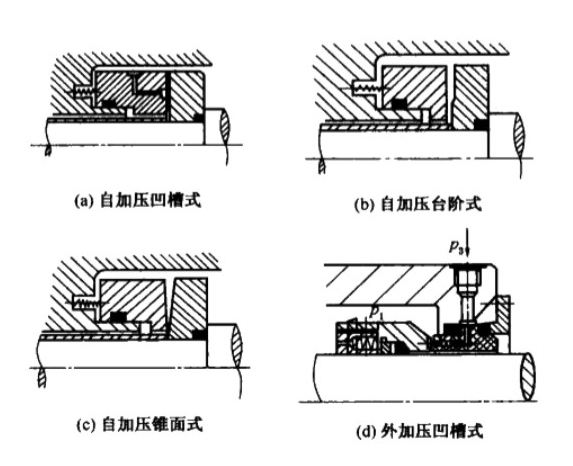Principles of non - contact mechanical seals
Although common contact mechanical seals are widely used, they have their own limitations in a certain sealing environment. Based on the modern theory of fluid dynamic lubrication under the pressure of continuous development of new non-contact mechanical seals.Therefore, compared with the ordinary contact mechanical seal, non-ordinary can more easily achieve the sealing medium zero leakage or even zero escape, completely eliminate the environmental occasions of pollution.
At the same time, because there is no direct solid friction and wear between the sealing end face and has a long service life greatly extended, sealing reliability significantly improved a lot, the price dropped a lot, economic benefits significantly improved and other technical advantages, cost-effective seals.
According to the sealing principle non-contact mechanical seal can be divided into hydrostatic mechanical seal, hydrodynamic mechanical seal and hydrostatic mechanical seal.
Hydrostatic mechanical seal is the pressure enough to balance the end of the pressure load of the sealing liquid or sealed by its own medium between the end of the sealing surface, so that the formation of the sealing end surface with sufficient lubrication and cooling effect of the hydrostatic fluid film.The following diagram makes it easier to see how several typical hydrostatic mechanical seals are assembled.

It is not difficult to see in the figure from the pressure groove, in the static ring around a number of holes and the end of the annular groove open communication.Its end face fluid film stiffness, stable performance, but need to prevent pinhole plug.Self - pressure bench is processed into a step shape on an end face.Its end face fluid film stiffness is smaller, end face grinding processing is more difficult.One end face of the self-pressurized cone is a convergent cone, and its liquid film stiffness is lower than that of the self-pressurized groove type and the self-pressurized step type, and the hydrostatic pressure is distributed in a parabola along the radius.All the three forms hydrostatic fluid film on the end face by the pressure of the medium itself, and the thickness of the fluid film changes with the fluctuation of the pressure of the medium, which is suitable for the occasions where the working pressure of the medium is relatively stable.
The fluid lubrication structure of the external pressure groove seal is similar to that of the self-pressure groove. The difference is that the hole around the static ring is not connected with the medium, and the sealing liquid is introduced from the outside into the primary groove on the end face to establish the end face static pressure fluid film.This kind of structure is suitable for the situation that the working pressure of the medium fluctuates, but the fluid with good lubrication performance and compatible with the medium should be selected as the sealing liquid, and the circulating regulating system of the external sealing liquid must be equipped at the same time.
Hydrostatic mechanical seals require a similar input lubrication medium pressure, so the control is more complex, now less application.
